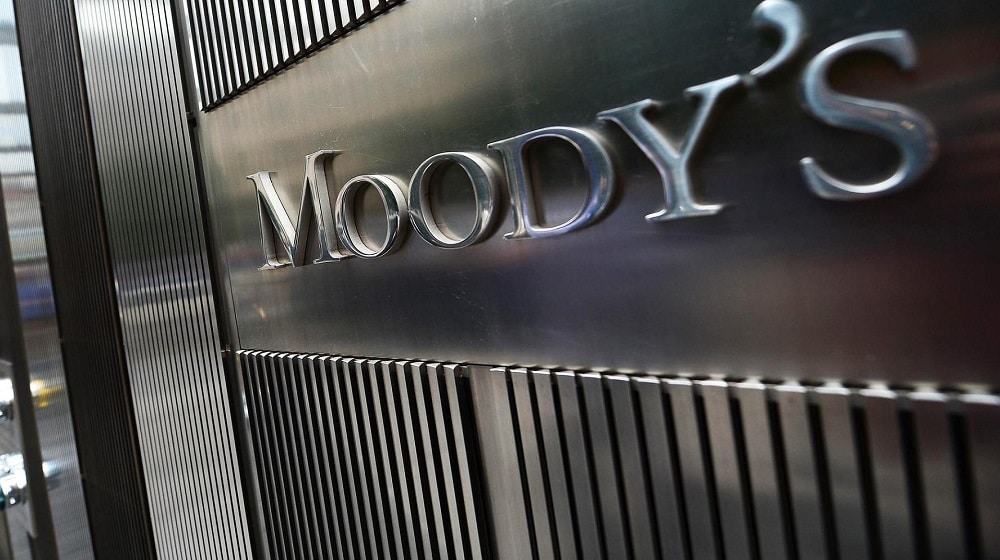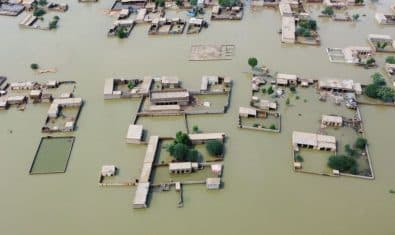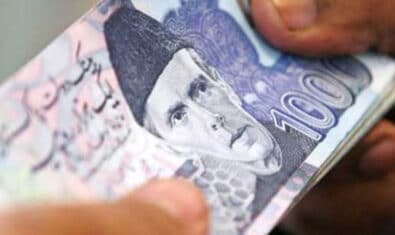Moody’s Investors Service says Pakistan’s high debt burden, very narrow revenue base, fragile external payments position and high political risk constrain the credit profile.
Moody’s, in its latest report on Pakistan, stated that continued widening of the fiscal deficit, ongoing weakening of the external payments position, loss of multilateral/bilateral financial support, a significant escalation in political tensions are also weighing on Pakistan’s credit profile.
Impact on Foreign Loans
The financial analysis firm says that it does not expect Pakistan’s addition to Financial Action Task Force’s (FATF) grey list in June 2018 to have a material impact on its external financing. Further, it does not anticipate any disruptions to borrowing from multilateral sources, which account for a significant portion of Pakistan’s external borrowing. Any adverse effects are more likely to materialize in the form of higher risk premia and borrowing costs, as well as more onerous compliance requirements.
Pakistan’s credit profile balances robust growth potential and a relatively large economy with low income levels, infrastructure constraints and very low global competitiveness.
ALSO READ
WEF Global Risks Report 2018 Paints a Scary Picture for the Near Future
In recent years, the credit has been supported by an improved track record of reforms started under an International Monetary Fund (IMF) program, and improvements in power supply and infrastructure driven by the China-Pakistan Economic Corridor (CPEC) project.
Future Outlook
The stable outlook reflects a balance of positive and negative pressures. On the upside, there is potential for further strengthening in growth beyond current expectations, as the successful implementation of the CPEC project has the potential to transform the Pakistani economy by removing infrastructure bottlenecks and stimulating both foreign and domestic investment.
On the downside, the economic benefits of CPEC are still highly uncertain and infrastructure impediments may continue to constrain growth to a greater extent than we currently envisage.
Moreover, the fiscal costs related to the project and, more generally, development spending could raise Pakistan’s debt burden more rapidly and significantly than we expect. In addition, the external payments position has deteriorated owing to high levels of imports and could develop into greater external vulnerability.
Possible Improvements
Meanwhile, political risk remains high in Pakistan, due to uncertainty arising from recent political developments and recurrent terrorist attacks. Factors that could lead to upward triggers to the rating stemming from sustained progress in structural reforms that would significantly reduce infrastructure impediments and supply-side bottlenecks. This would improve Pakistan’s investment environment and eventually aid a shift to a sustained higher growth trajectory.
ALSO READ
IMF Alerts “Pakistan’s Net Foreign Currency Reserves Stand at Minus $724 Million”
A lasting strengthening in the external liquidity position or meaningful reduction in the government deficit and debt burden would also be credit positive. Factors that could lead to a downgrade Moody’s would view a stalling of the government’s post-IMF program reform agenda, including revenue reforms and the strengthening of monetary policy and central bank independence, to be credit negative.
Moody’s Ratings
Detailed credit considerations Pakistan’s (B3 stable) credit profile is underpinned by “Moderate (+)” economic strength, “Very Low (+)” institutional strength, “Very Low (-)” fiscal strength, and “High” susceptibility to event risk. Moody’s assessment of “Moderate (+)” economic strength reflects the country’s relatively robust GDP growth, limited by supply-side constraints on the economy.
CPEC-related investments in power generation has largely addressed the issue of chronic power shortages, and further implementation of CPEC will, over time, address other supply-side constraints including in transport infrastructure, which would raise Pakistan’s growth potential and competitiveness. However, security-related issues and a weak track record of public project implementation suggest the pace of project execution will be relatively slow.
ALSO READ
PAC asks Government to Close Ministry of Science and Technology
Moreover, while the scale of the economy is relatively large, Pakistan’s per capita income is very low, indicating a limited capacity to absorb negative shocks. Pakistan, like many of its South Asian neighbors, is vulnerable to climate change risk, as identified in Moody’s report on environmental risk and its impact on sovereigns. The magnitude and dispersion of seasonal monsoon rainfall continues to influence agricultural sector growth and rural household consumption. As a result, both droughts and floods can create economic, fiscal and social costs for the sovereign. The score for Pakistan’s institutional strength is set at “Very Low (+)” which is above the indicative score of “Very Low (-)” to reflect significant traction on reforms under and following Pakistan’s recent IMF program, which concluded in September 2016, along with improvements in transparency.
Key IMF program goals included fiscal deficit reduction, strengthening of the monetary policy framework, resolving constraints in the energy sector, and state-owned enterprise reform. Continued government commitment to the implementation of reforms would help reinforce fiscal and monetary policy discipline, thereby preserving recent macroeconomic stability gains and strengthening institutional effectiveness in the future. Such improvements would help support the sovereign credit profile through enhanced policy credibility and effectiveness.
Progress on these reforms balances key institutional constraints from factious relations between the executive, military and judicial branches of government. Institutional constraints are also reflected in Pakistan’s very low rankings in the Worldwide Governance Indicators on government effectiveness, rule of law and control of corruption.
Other factors that drive Pakistan’s sovereign credit rating are its relatively weak fiscal profile and high susceptibility to event risk. The score for fiscal strength is set at “Very Low (-)” to reflect Mood’s assessment of the country’s very narrow revenue base, which hinders debt affordability and increases the debt burden. In particular, Pakistan’s limited tax base restricts its fiscal space, while low savings and shallow capital markets hinder stable domestic financing of sizable budget deficits.
The material foreign currency portion of outstanding government debt (approximately 30.6% of total general government debt as of the end of fiscal year 2017) also exposes the government’s balance sheet to foreign exchange risks. Events that could abruptly lead to negative pressure on Pakistan’s credit metrics relate to political shocks and the government’s large financing needs with uncertain market access.
Political risk and government liquidity risk are the main drivers of assessment of Pakistan’s “High” susceptibility to event risk score. The score for Pakistan’s political risk is set at “High” reflecting a high probability of a high impact scenario involving an escalation of violent terrorism or tensions between the different branches of the government, which could threaten political stability and divert essential policy and economic resources.
Meanwhile, Pakistan’s score for government liquidity risk is set at “High” above the indicative score of “Moderate”, to reflect the magnitude of the sovereign’s gross borrowing requirements, which are among the highest in our rated universe. The government’s debt funding structure, reliant on domestic banks and, to some degree, long-tenor credits from multilateral and official bilateral creditors mitigates refinancing risk somewhat.
The external vulnerability risk score is set at “Low”, reflecting a generally modest current account deficit, half of which is financed by stable foreign direct investment (FDI). Moreover, foreign exchange reserves cover external debt payments due over the next year. However, external pressures are now building as a result of the recent widening of the current account deficit driven by increased capital goods imports for CPEC and financed in part by external debt.
Recent developments strong growth momentum, supported by domestic demand and CPEC investments after growing 5.3% in the fiscal year ending June 2017 (FY2017), Pakistan’s economy has maintained its solid momentum through the first half of fiscal year 2018.
Economic Growth
Economic growth has been supported in particular by the ongoing recovery in the agricultural sector, aided by an increase in credit disbursements and more favorable weather conditions, as well as robust activity in large-scale manufacturing owing to improved energy availability and capacity expansions. Higher remittance inflows, which rose 3.4% year-on-year in the first eight months of FY2018 after having contracted for most of FY2017, would likely have provided a further fillip to growth.
Moody’s GDP growth forecast of 5.5% for FY2018 takes these domestic factors into account, as well as ongoing investments related to CPEC. The strong domestic economy has been acknowledged by the State Bank of Pakistan (SBP), which raised its policy rate in January this year for the first time since June 2016 – by 25 basis points to 6%.
That said, we do not anticipate the SBP to aggressively raise rates ahead of the July 2018 general election. Inflationary pressures remain modest; in fact, inflation in February was 3.8%, down from the recent peak of 4.6% in December 2017 and lower than the SBP’s inflation target of 6% for FY2018.
External pressures remain, currency adjustments unlikely to provide substantial relief The strong domestic demand has also increased pressure on Pakistan’s external account. In particular, the current account deficit widened to $7.5 billion in the first half of FY2018 (compared to $4.7 billion in the first half of FY2017), driven by a large increase in the goods deficit. This was primarily due to higher CPEC-related capital goods imports, even though exports and secondary income also rose.
Despite the larger first-half deficit, Mood’s continue to expect the FY2018 current account deficit to remain at similar levels at 3.5% of GDP, with downside risks to forecast. It further maintained that the brighter prospects for exports and remittances – the latter will be supported by higher inflows from Gulf Cooperation Council (GCC) economies if oil prices remain at current levels – as well as the completion of most energy-related projects under CPEC, which are more import-intensive than infrastructure projects, will prevent a sharp deterioration in the current account.
Foreign Reserves
By contrast, Moody’s does not expect the exchange rate of the Pakistani rupee (PKR) to provide meaningful relief to the external pressures, at least not until after the general election. The SBP had announced in a press release1 last December that it would allow the PKR to reflect supply and demand conditions in the foreign exchange market in the face of rising external pressures and declining foreign exchange reserves. However, the 5% depreciation of the PKR against the US dollar (USD) over three trading days has not been followed by further depreciation, despite a decline in Pakistan’s foreign reserves.
Foreign reserves reached a thirty-four month low of $12.1 billion on 9 March 2018, representing 2.5 months of import cover on a three-month rolling basis and below the IMF’s three-month minimum adequacy guideline.
US military aid has resumed. After initially announcing in January 2018 that all security assistance aid to Pakistan would be suspended, the Trump administration subsequently submitted a proposal to the US Congress to approve civil and military aid that is roughly in line with prior year funding levels.
While we continue to think that a reduction in US military aid in itself would not have a material effect on Pakistan’s public finances, the resumption of military aid flows would on margin ease the pressure on the government deficit, which we expect will amount to 5.5% of GDP in FY2018.
Meanwhile, media has speculated that Pakistan will be added to the Financial Action Task Force’s (FATF) grey list in June 2018, joining countries such as Serbia (Ba3 stable), Ethiopia (B1 stable), Sri Lanka (B1 negative), and Tunisia (B2 stable) as monitored jurisdictions. We do not expect Pakistan’s addition to the greylist to have a material impact on its external financing.
Pakistan was previously on this list between 2012 and 2015 but managed to negotiate and enter into an IMF program during that time. As such, no disruptions to borrowing from multilateral sources are expected, which account for a significant portion of Pakistan’s external borrowing. Any adverse effects are more likely to materialize in the form of higher risk premia and borrowing costs, as well as more onerous compliance requirements.





















